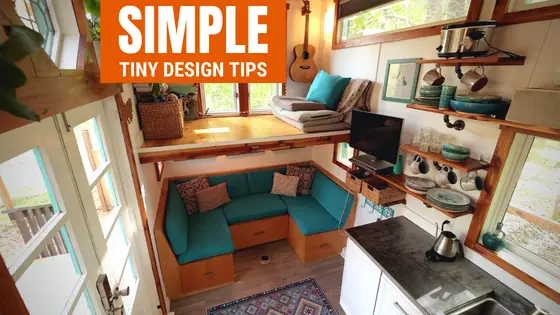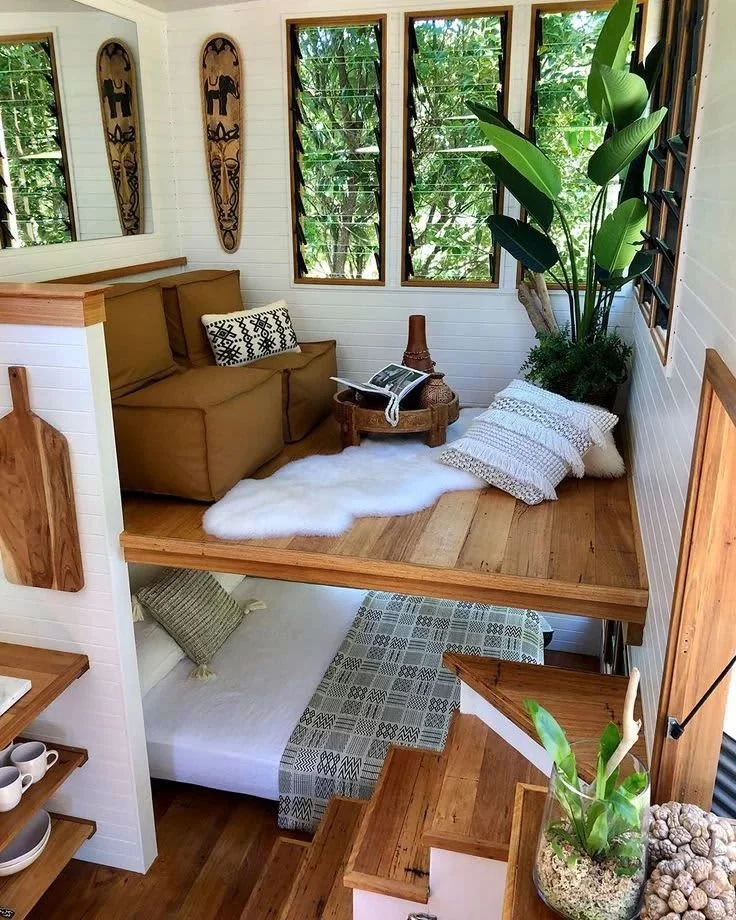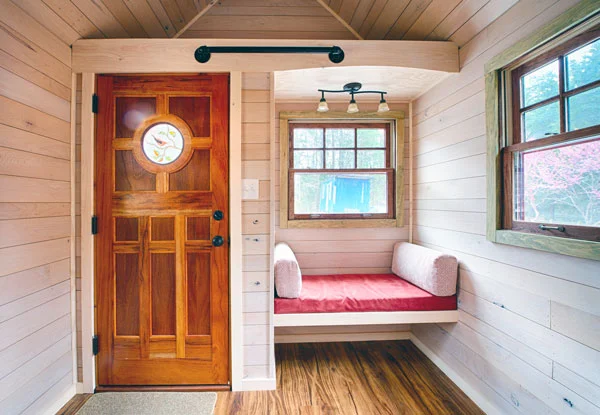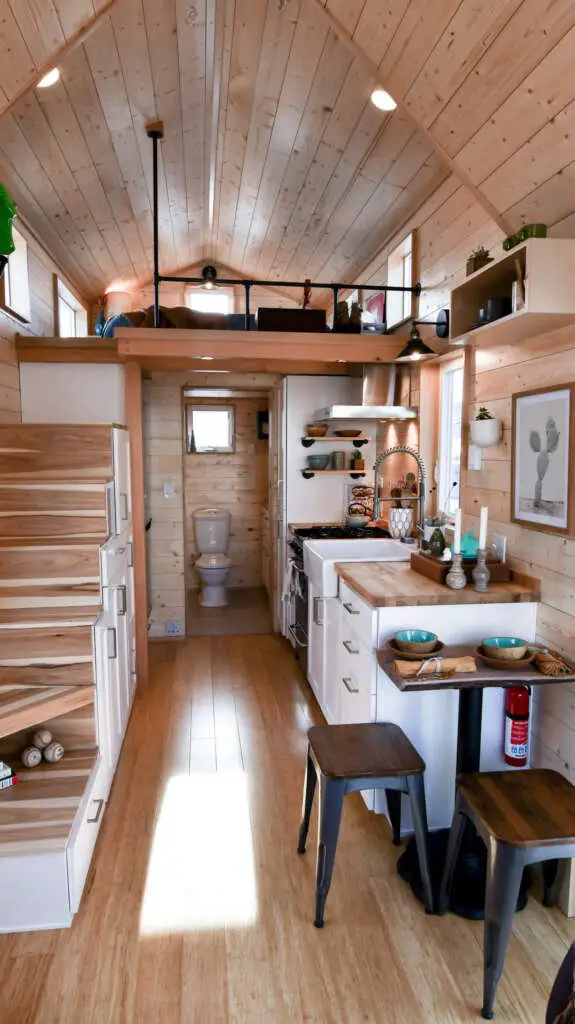Are you feeling overwhelmed with the task of choosing the perfect design for your tiny home? Fear not, because we’re here to help! In this article, we will explore the key factors to consider when selecting the right design for your tiny home. From functional layouts to maximizing space, we’ve got you covered. So, let’s dive in and find the design that will transform your tiny house into a cozy and stylish sanctuary you’ve always dreamed of.
Understanding Your Needs
When it comes to choosing the right design for your tiny home, the first step is understanding your own needs. Your lifestyle plays a crucial role in determining what features and design elements are most important to you.
Assessing your lifestyle
Take a moment to consider how you will be using your tiny home. Are you a solo traveler, a couple, or a small family? Will you be living in your tiny home full-time or using it as a vacation getaway? Understanding your lifestyle will help you determine the size and layout that will best suit your needs.
Determining your space requirements
Next, it’s important to determine how much space you will need in your tiny home. Consider your daily activities and the items you can’t live without. Do you need a separate workspace or a larger kitchen? Will you require extra storage for outdoor equipment or hobbies? By assessing your space requirements, you can ensure that your tiny home has enough room to accommodate your lifestyle.
Identifying your design preferences
Lastly, think about your design preferences. Do you prefer a modern aesthetic, or are you more drawn to rustic, bohemian, or minimalist styles? Identifying your design preferences will help you narrow down your options and create a space that reflects your personal taste and style.
Considering Functionality
Functionality is key when it comes to designing a tiny home. Every inch of space needs to be carefully utilized to ensure maximum efficiency and comfort.
Analyzing layout options
One of the first decisions you’ll need to make is choosing a layout for your tiny home. There are several options to consider, such as open floor plans, separate rooms, loft beds, Murphy beds, and sliding walls. Each option offers its own advantages and disadvantages, so it’s important to carefully analyze which layout will best suit your needs and preferences.
Taking into account multi-functional furniture
Another aspect of functionality to consider is the use of multi-functional furniture. In a tiny home, it’s essential to choose pieces that serve multiple purposes. For example, a sofa that converts into a bed or a dining table that doubles as a workspace. By incorporating multi-functional furniture, you can make the most of your limited space without sacrificing comfort or style.
Evaluating storage solutions
Storage is often a challenge in tiny homes, so it’s important to evaluate storage solutions that can optimize space. Consider utilizing built-in shelves, under-bed storage, or vertical storage options. Efficiently designed storage solutions can help you keep your tiny home organized and clutter-free.
Maximizing natural light and ventilation
Lastly, don’t forget to consider the importance of natural light and ventilation in your tiny home. By incorporating large windows, skylights, and strategically placed ventilation options, you can create a bright and airy space that feels larger than it is.

Choosing the Right Layout
The layout of your tiny home can greatly impact the functionality and flow of the space. Consider the following layout options when designing your tiny home:
Open floor plan
An open floor plan creates a sense of spaciousness and maximizes the use of available space. By eliminating unnecessary partitions, an open floor plan allows for flexible use of the space and promotes a more social environment.
Separate rooms
If privacy is a priority, consider opting for separate rooms in your tiny home. This allows for defined areas, such as a bedroom, living room, and kitchen, providing a sense of privacy and separation between different activities.
Loft bed
A loft bed is a popular choice for tiny homes, as it allows for the efficient use of vertical space. By elevating the bed, you can create additional floor space for other activities or storage.
Murphy bed
A Murphy bed, also known as a wall bed, is a space-saving solution that folds up into a wall when not in use. This option is ideal for those who want the flexibility of a separate bedroom without sacrificing valuable floor space.
Sliding walls
Sliding walls are a creative way to divide the space in your tiny home. By using sliding panels or doors, you can easily transform an open area into separate rooms, providing flexibility and adaptability to the space.
Exploring Design Styles
The design style of your tiny home can greatly impact its overall ambiance and aesthetic appeal. Consider the following design styles when designing your tiny home:
Minimalist
Embrace simplicity with a minimalist design. Clean lines, neutral colors, and a clutter-free environment can create a sense of calm and tranquility in your tiny home.
Rustic
For a cozy and warm atmosphere, consider a rustic design. Incorporate natural materials, such as reclaimed wood or stone, and add rustic accents to create a charming and inviting space.
Modern
A modern design emphasizes sleek lines, minimalist decor, and contemporary finishes. This style works well in small spaces, as it promotes simplicity and functionality.
Scandinavian
Scandinavian design focuses on creating a cozy yet minimalist space. Light colors, natural materials, and functional furniture are all hallmarks of this style, making it a popular choice for tiny homes.
Industrial
Industrial design embraces the raw and unfinished look of industrial spaces. Exposed brick, concrete floors, and metal accents can create a unique and urban aesthetic in your tiny home.
Bohemian
For those who love vibrant colors and eclectic decor, a bohemian design may be the perfect fit. Combine patterns, textures, and unique pieces to create a boho-inspired space that reflects your personality.
Considering Sustainability
Incorporating sustainable practices into your tiny home design can not only benefit the environment but also lead to long-term cost savings. Consider the following sustainable practices when designing your tiny home:
Using eco-friendly materials
Opt for eco-friendly materials, such as reclaimed wood, bamboo, or recycled materials, to reduce your environmental footprint. These materials are not only sustainable but also add a unique and natural touch to your tiny home.
Optimizing energy efficiency
Design your tiny home with energy efficiency in mind. Consider installing energy-efficient appliances, LED lighting, and well-insulated windows and doors to reduce energy consumption and lower utility bills.
Incorporating renewable energy sources
Harness the power of renewable energy sources, such as solar panels or wind turbines, to generate electricity for your tiny home. This reduces reliance on traditional energy sources and can even make your tiny home self-sufficient.
Implementing smart home technology
Integrate smart home technology into your tiny home to optimize energy usage and improve overall efficiency. From automated lighting and temperature control to remote monitoring systems, smart home technology can enhance both sustainability and convenience.
Balancing Aesthetics and Practicality
Designing a tiny home is a delicate balance between aesthetics and practicality. Consider the following tips when creating a visually appealing and functional space:
Prioritizing functionality
Ensure that each design choice prioritizes functionality. Ask yourself if a particular feature or element will enhance your daily life in the limited space you have. By prioritizing functionality, you can create a tiny home that meets your practical needs.
Creating a visually appealing space
While functionality is important, it’s also crucial to create a visually appealing space that reflects your personal style. Explore different color palettes, textures, and decor options to create a beautiful and inviting atmosphere in your tiny home.
Keeping in mind maintenance and durability
Tiny homes require regular maintenance, so it’s important to choose materials and finishes that are durable and easy to clean. Consider low-maintenance options that can withstand the wear and tear of everyday use, ensuring that your tiny home remains in good condition for years to come.

Seeking Professional Help
Designing a tiny home can be overwhelming, especially if you have limited experience in architecture or interior design. Consider seeking professional help to ensure that your design meets your needs and is structurally sound.
Consulting with an architect or interior designer
Consulting with an architect or interior designer can provide valuable insights and expertise. They can help you determine the best layout, choose suitable materials and finishes, and create a design that optimizes the available space in your tiny home.
Getting expert advice on space optimization
Space optimization is key in a tiny home, and experts can provide valuable advice on how to make the most of your limited square footage. From creative storage solutions to innovative furniture arrangements, they can help you maximize your space without compromising on functionality or aesthetics.
Exploring custom design options
Consider exploring custom design options to tailor your tiny home to your specific needs. Custom-built furniture, storage solutions, and fixtures can be designed to fit perfectly into your space, making the most of every nook and cranny.
Considering Building Codes and Zoning Regulations
Before embarking on your tiny home journey, it’s crucial to familiarize yourself with relevant building codes and zoning regulations. Each region may have specific requirements and restrictions that must be adhered to.
Familiarizing yourself with local regulations
Research and understand the building codes and zoning regulations in your area. This will help you navigate the legal aspects and ensure that your tiny home design complies with all necessary standards.
Understanding size and placement restrictions
Some areas may have limitations on the size and placement of tiny homes. Familiarize yourself with any restrictions concerning square footage, height, setback requirements, or parking regulations. Understanding these limitations will help you design a tiny home that meets all necessary criteria.
Ensuring compliance with safety standards
Safety should always be a priority. Ensure that your tiny home design meets all safety standards, such as proper electrical and plumbing installations, fire safety measures, and structural stability. Depending on your region, you may need to obtain permits or inspections to ensure compliance.

Evaluating Cost and Budget
Designing a tiny home requires careful evaluation of your budget and costs. Consider the following factors when assessing the financial aspect of your tiny home project:
Determining your budget
Before starting the design process, determine your budget. This will help you make informed decisions and prioritize your expenses. Consider all aspects, including construction, materials, furnishings, and any additional costs that may arise during the building process.
Accounting for construction, materials, and furnishings
Take into account the costs of construction, including labor, materials, and any necessary permits or inspections. Additionally, consider the cost of furnishings and decor items that will be needed to complete your tiny home. Careful budgeting will ensure that you can create the tiny home of your dreams within your financial means.
Considering long-term maintenance costs
While building a tiny home can save you money in the long run, it’s important to consider long-term maintenance costs. Evaluate the durability and quality of the materials you choose, as well as the potential costs of any necessary repairs or upgrades down the line. Being aware of these costs will help you plan and budget accordingly.
Gathering Inspiration and Learning from Others
Finally, gather inspiration and learn from others who have designed and built their own tiny homes. There are various resources available to help you explore design ideas and gain valuable insights.
Doing research on tiny home designs
Spend time researching different tiny home designs to gather inspiration for your own project. Look for online articles, blogs, and books that showcase different layouts, decor styles, and innovative design solutions. This research will help you refine your own design vision and identify elements you would like to incorporate into your tiny home.
Visiting tiny home communities or exhibitions
If possible, visit tiny home communities or exhibitions to gain firsthand experience and see tiny homes in person. Talking to homeowners and professionals in the industry can provide valuable insights and advice. These experiences can also help you better understand the functional aspects of tiny homes and get a feel for what might work best for you.
Joining online forums or social media groups
Connect with the tiny home community by joining online forums or social media groups. These platforms provide opportunities to ask questions, share ideas, and learn from others who have already gone through the design and construction process. The support and knowledge shared within these communities can be invaluable as you navigate your own tiny home journey.
By understanding your needs, considering functionality, exploring design styles, and taking into account sustainability, you can choose the right design for your tiny home. Balancing aesthetics and practicality, seeking professional help if needed, ensuring compliance with building codes, evaluating costs, and gathering inspiration from others will all contribute to creating a tiny home that is truly your own. Happy designing!



